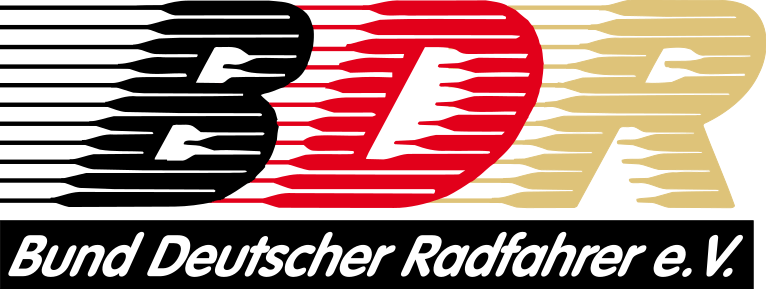Separating muscular and non-muscular forces at the pedal
(Trennung von muskulären und nicht-muskulären Kräften an der Pedale)
Introduction: the availability of equipment for pedal force measurement is growing rapidly. However, not the measured pedal force but only its muscular part represents the effort generated by the athlete. To optimize cycling performance it is necessary to understand how interventions (training methods, pedaling techniques, body configurations, visual feedback of vector force, bicycle designs etc.) affect the components and origins of pedal forces. Pedal forces during cycling originate both from muscular forces leading to moments generated in the joints (hip, knee, ankle) and from gravity and inertia. No direct relation between pedal force and muscle force exists. Here we propose a novel method that provides a decomposition of the total pedal force into a part due to muscular forces (muscular part), and a part due to gravity and inertia (non-muscular part). The method is called the Power Balance Approach (PBA) as it is principally based on a decomposition of power rather than force. We show that decomposition on the basis of force (Kautz 1993) breaks energy conservation.
Method and results: During cycling a continuous shift between muscular and gravity-inertia forces takes place. Going from top to bottom dead center gravity helps to generate pedal force, whereas a resistive force develops and equivalent power is consumed by inertia. Just before bottom dead center this power is returned and a positive force is being developed by inertia. Going up gravity generates a resistive force, while the inertia process repeats. Forces from inertia cannot be neglected as they increase quadratically with cadence and even may exceed total muscular pedal force. A 3-segment (thigh, shank, foot) mechanical leg model has been proven to be adequate to describe the relation between pedal, muscle, gravity and inertial forces (Hull & Jorge 1985, Kautz & Hull 1993). The model can be split into two subsystems: a muscular subsystem, describing the muscle function, and a non-muscular subsystem for the role of inertia and gravity. Although joint moments can be calculated for given pedal forces, the opposite is not possible because the subsystems contain more equations (3) than unknowns (2). This inconsistency can be solved by introducing as an extra unknown an active moment at a joint in the non-muscular subsystem. This active moment can be put either on the hip, knee, ankle or pedal but no solution exists for the knee model. For the remaining three "single-moment" models (ankle, pedal, hip), the non-muscular pedal forces are computed using the kinematic data of 10 people (4 cycling sessions each). The results of the models (Table 1) differ significantly so how to decide which is most realistic? Another result makes these solutions definitely not acceptable: the non-zero mean tangential force. This mean force should be zero as, over one full crank revolution, inertia and gravity cannot generate energy.
This energy misbalance is circumvented by the PBA. The PBA is based on the precondition that all energy generated by the muscles must be inherent to the muscular subsystem. Moreover at any moment during the pedaling cycle, the power measured at the pedal equals the total muscle power plus total power by inertia and gravity. The total muscle power can be computed from the muscular moments; from this the muscular and the non- muscular tangential force follow. The non-muscular radial force is found by minimizing the RMS (root mean square) values of the three joint moments and thereby minimizing the muscle effort in the non-muscular subsystem. PBA results in radial forces comparable to the Ankle and Pedal Model in the non-muscular subsystem (Table 1).
Conclusion: We conclude that PBA, in contrast to the single-moment-models, yields a clear separation of power flow: the muscular subsystem transfers all muscular power and the non-muscular none (Table 1). In PBA all three joints have moments acting together to prevent generating a net tangential force in the non-muscular subsystem. This cannot be realized by a single active moment in the non-muscular subsystem. The clear separation of power and forces allows a proper evaluation of various interventions in cycling.
Application: As an illustration of significant difference the index of effectiveness (IE) is shown for measured and computed muscular component (Figure 1). Visual feedback makes only sense when it is based on pure muscular effort displayed by computed force vectors. "What if ..." questions like: what is the consequence if one wants to remove all radial pedal force, or, maybe making more sense, what if one removes only the muscular radial force from the pedal, will be formulated and answered.
© Copyright 2015 Journal of Science and Cycling. Cycling Research Center. Alle Rechte vorbehalten.
| Schlagworte: | Radsport Biomechanik Kraft Muskel |
|---|---|
| Notationen: | Ausdauersportarten Naturwissenschaften und Technik |
| Veröffentlicht in: | Journal of Science and Cycling |
| Veröffentlicht: |
2015
|
| Jahrgang: | 4 |
| Heft: | 2 |
| Seiten: | 20-21 |
| Dokumentenarten: | Artikel Kongressband, Tagungsbericht |
| Sprache: | Englisch |
| Level: | hoch |
